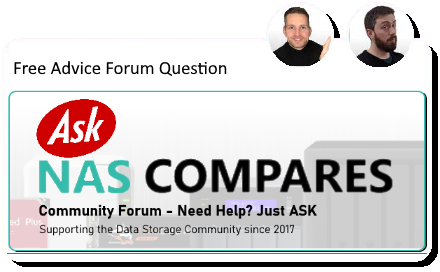Yesterday, 07:00 AM
Hi, thank you for providing this service! I currently run a DS720+ with 8GB RAM. Current uses are:
- Surveillance storage (using Frigate) ~1.8TB, Reolink POE cameras
- Home automation (Home Assistant) - 32GB VM with 2GB RAM
- Dabbling in arr services, but this is not a requirement (not even sure I want to be bothered with this)
- Lightweight video server (Plex or Jellyfin)
- Manual backups of critical historical files (photos, music, movies/videos, old work references)
- File sync server
What I would like:
- All of the above with the following caveats/additions
- Not opposed to doing a dedicated Reolink NVR for recording and playback and using frigate for just detection
- Snappier HA response
- Time Machine backups (2 machines, up to 1TB per machine)
- Ability to run a lightweight local LLM for use with HA, either in memory using the CPU or with a small dedicated GPU
I am open to exploring multiple machines here, perhaps a dedicated machine to run services and a d
- Surveillance storage (using Frigate) ~1.8TB, Reolink POE cameras
- Home automation (Home Assistant) - 32GB VM with 2GB RAM
- Dabbling in arr services, but this is not a requirement (not even sure I want to be bothered with this)
- Lightweight video server (Plex or Jellyfin)
- Manual backups of critical historical files (photos, music, movies/videos, old work references)
- File sync server
What I would like:
- All of the above with the following caveats/additions
- Not opposed to doing a dedicated Reolink NVR for recording and playback and using frigate for just detection
- Snappier HA response
- Time Machine backups (2 machines, up to 1TB per machine)
- Ability to run a lightweight local LLM for use with HA, either in memory using the CPU or with a small dedicated GPU
I am open to exploring multiple machines here, perhaps a dedicated machine to run services and a d





